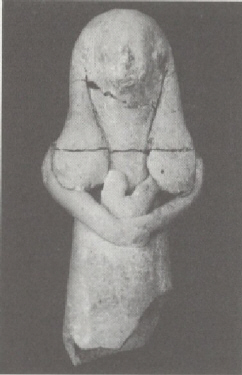Archaeologists Bring Ancient Zarephath To Life -- By: Anonymous
Journal: Bible and Spade (First Run)
Volume: BSP 02:1 (Winter 1973)
Article: Archaeologists Bring Ancient Zarephath To Life
Author: Anonymous
BSP 2:1 (Winter 1973) p. 23
Archaeologists Bring Ancient
Zarephath To Life
Zarephath, the city where the prophet Elijah lived while hiding from King Ah̄ab in the 9th century B.C. is again coming to life. It was during Elijah’s stay with a widow woman there, that he miraculously multiplied her provisions and brought her son back to life. (1 Kings 17)
When Dr. Pritchard of the University of Pennsylvania discovered Zarephath in 1970, he brought to light the first Phoenician city ever found in Lebanon. Until this discovery, these ancient people, who transmitted the alphabet to the West, were best known from the colonies they established throughout the Mediterranean at harbors in Sardinia, Spain, North Africa, Cyprus, and other sites. The Phoenicians were known as Sidonians, or Zidonians, in the Bible, after Sidon, one of their chief cities.
Zarephath, whose Phoenician name was Sarepta, was a seaport lying on the Mediterranean coast between Sidon and Tyre. It thrived from about 1600 to 100 B.C. and occupied an area of 15 to 20 acres. Today Zarephath lies beneath the modern fishing village of Sarafand.
During the summer of 1972, Dr. Pritchard completed his fourth season of excavating at Zarephath under a six-year Lebanese permit. (See BIBLE AND SPADE, Vol. 1, No. 1, pg. 21 for a previous report.) Pritchard’s team of 13 archaeologists and about 75 laborers cleared a 65 by 98 foot area during the past season. Most of the site was an industrial area, but in one section the excavation uncovered a temple. The temple was an important discovery, for it represents the first Phoenician temple to be found in the homeland of these seafaring merchants. In addition, the first material evidence of two Phoenician industries, dye-making and metal working, was recovered.
The ancient stone temple was used during the seventh and sixth centuries B.C. Phonecian craftsmen built the walls of rectangular limestone blocks and the 12 by 24 foot floor with a single cement slab about four inches thick. An altar, offering tables and a cache of religious objects found inside the temple will enable scholars to
BSP 2:1 (Winter 1973) p. 24

Figurine of Ashtoreth, fertility goddess of the Phoenicians, recovered at Zarephath in 1972. Ashtoreth is mentioned a number of times in the Old Testament, for example Judges 10:6, 1 Kings 11:5, 33 and 2 Kings 23:13.
examine the little-known religious...
Click here to subscribe
